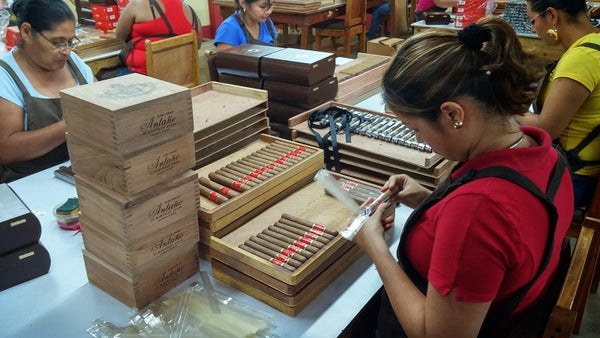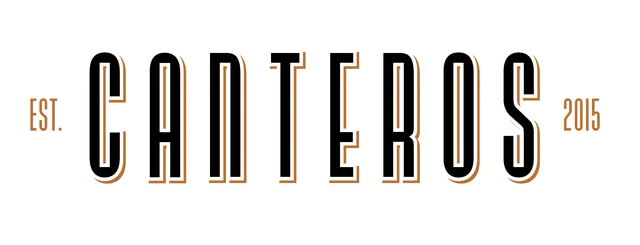Now I will get controversial - one of the reasons I personally do not sell/trade in Cuban cigars is because ultimately it supports a dictatorship that oppresses its citizens; the people of Cuba.
Would these people have had a better life without Castro, that is a hard one to call; but ultimately as I have conveyed over the previous two-Sunday's, one way or another Castro would've been removed from power; unfortunately it didn't happen until his death in 2016.
For me, I am fortunate to have a very personal involvement in nuevo-mundo cigars (new-world cigars, cigars of the free world) and similarly I personally know the people involved in the factories that produce the finest cigars in the world and of course the family members etc. behind these cigar brands.
And yes, a lot of them are Cuban-exiles who have fled oppression for a new life with and sometimes sadly without their families...
To this day (27th of November, 2022 for the record) cigars produced in Cuba are 100% controlled by the Cuban Government, the factories, farms and all aspects of production are still 100% controlled by the Cuban Government!

The Cuban Government has not returned the ownership of the factories, farms, box production etc. back to the rightful owners who established these businesses legally before Fidel Castro seized control of Cuba in 1959.
Yes, now with the death of Fidel Castro and the resignation of his brother Raúl Castro; Cuba has moved to an "authoritarianism" style of Government control; they do hold elections but they are not democratic and State control is still fully in place under President Miguel Díaz-Canel's government.
But politics aside
There are a lot more favourable reasons as to why I personally enjoy, promote and embrace nuevo-mundo (new-world) cigars and have done so for over a quarter of a century!
Agriculturally speaking - Cuba has four distinct tobacco growing regions, this creates what is renowned as the "classic Cuban cigar profile" across the key brands produced in Cuba.
The dominant brands I would say are Bolivar, Cohiba, H. Upmann, Hoyo de Monterrey, Montecristo, Partagas, Punch & Romeo y Julieta; each with a distinctive profile that you are drawn to.

Maybe in an upcoming Blog post I will go into the specifics of each brand and their distinctive flavour profiles?
It is fair to say, agriculturally speaking Cuba is falling far behind its new world competitors in Nicaragua, Honduras, Dominican Republic and Costa Rica; they are struggling with fertiliser supplier; they tend to not rotate crops out because they are for want of a better word, desperate for tobacco production and unfortunately plagued with mould and environmental issues.
Similarly, Nicaragua has four major tobacco growing regions (Esteli, Jalapa Valley, Ometepe and Condega Valley) but they are on a whole other scale compared to that of Cuba - and these are just the four main regions with many many sub-regions to explore.
Likewise Honduras has three main tobacco growing regions (El Paraiso or Jamastran Valley, Talanga Valley and Copan) again, on a much larger scale with many sub-regions within - in fact Honduras has been producing tobacco since at least 1765.
You then still have Costa Rica, Ecuador, Mexico, Dominican Republic and the United States of America.

Uniquely because of the Cuban embargo and the ongoing Government control; the rest of the free world gets to utilise the upmost highest quality tobacco from all around the world (Sumatra and Cameroon etc.) and produce the absolutely stunning cigars we all enjoy today.
From the exquisite U.S. Connecticut Shade and Broadleaf Maduro wrappers to the unique African Cameroon wrapper and then Honduran Corojo or Nicaraguan Habano wrappers; there literally are endless blends possible.
This was something highlighted by Pete Johnson of Tatuaje Cigars - the options in terms of tobacco types, regions, fermentation and of course age have created an incredible opportunity in the new-world of cigars.

Master Blenders and Master Growers - this is why we "thanked" Fidel Castro (tongue-in-cheek); as the worlds foremost experts (Masters) in terms of growing, curing and aging tobacco and of course the blenders who then turn those incredible crops into amazing cigars have all come from; largely all are Cuban exiles.
We are now seeing the new generations come through, but for now it is fair to say the "old guard" are doing an exceptional job and will be here for years to come and impart their lifelong knowledge to the next generation of artisan cigar producers.
The new generations, like A.J. Fernandez who grew up next to Alejandro Robaina in Pinar del Rio and learnt all there possibly was to learn about growing tobacco have well and truly established themselves in Nicaragua and like A.J. who has secured so many Top 25 Cigar of the Year accolades it is so inspiring to see.
A.J. has taken his knowledge to not only continue growing tobacco at a Master-level; but he has also started to pioneer his own hybrid tobaccos varieties, the the wrapper his on his Bellas Artes line.

Let us not forget that Cuba's heritage with cigars was always more than Cuban-rolled; up until the U.S. embargo was put in place, Cuba's once famous tobacco was highly sought after and used in production not only in Tampa Florida, but also throughout other regions in the world.
To a very large degree Nicaragua, Honduras, the Dominican Republic etc. have come an astonishingly long way in a short few decades in terms of tobacco production, fermentation and aging - thanks in no part by having some of the finest Cuban Masters on hand.
In 2021 Nicaragua (and in previous years) has shown its domination in the world of cigar production; far out producing the once powerhouse Cuba. None of that was possible without a solid foundation of incredible tobaccos, blenders, rollers etc.
Nicaragua rightfully holds the crown for the finest producer of cigars in the world today; however I would add that it is fair to say that each (mainly) Central American country has distinct qualities that produce fantastic cigars - it all comes down to your personal tastes...
